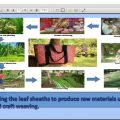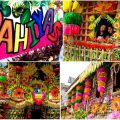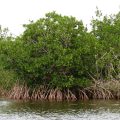The Ecosystems Research and Development Bureau (ERDB) has developed a manual on visitors’ carrying capacity in ecotourism sites in support of tourism growth and environmental preservation.
Visitors’ carrying capacity or CARCAP of ecotourism sites is an important tool in determining the number of visitors that should be allowed to stay in an area.
This tool addresses potentially dangerous congestion in tourist spots while sustaining tourism growth and preserving the environment, ERDB-Department of Environment and Natural Resources (DENR-ERDB) Acting Director Dr. Henry A. Adornado said.
“We have to recognize that most ecotourism sites in the Philippines are in protected areas (PAs)”, added Adornado. “Thus, CARCAP becomes an imperative to balance tourism’s arrival with the safeguards of the environment.”
The CARCAP guide is called “Manual on Computing the Carrying Capacity of Ecotourism Sites in Protected Areas.
In 2013, DENR has issued Administrative Order (AO) 2013-19 or “Guidelines on Ecotourism Planning and Management in Protected Areas” to support tourism and management of PAs. The AO prescribes that carrying capacity of each ecotourism site in the PA should be established.
With CARCAP as part of an ecotourism management plan, visitors’ activities are properly regulated and thus, potential negative impacts on the environment are mitigated.
Factors affecting CARCAP
Under the CARCAP, the number of visitors that an ecotourism site can accommodate at satisfactory level is determined based on biophysical considerations, recreational activities, visitors’ preferences, equipment brought to the site, and services provided in the site, according to Dr. Lope A. Calanog, CARCAP manual author and former ERDB supervising science research specialist.
A site’s environmental condition, its importance on biodiversity, is also a significant factor in CARCAP.
Sites that serve as breeding grounds for important birds, nesting areas for marine turtles, or spawning grounds for fish species also affect the computation of number of visitors that may be allowed in an area.
Socio-cultural aspects should also be considered in the computation of CARCAP. For instance, a portion of an ecotourism set aside by indigenous people or other ethnolinguistic groups may be cited as a sacred grove.
Limits for change
ERDB also applies the idea of Limit of Acceptable Change (LAC) in deciding carrying capacity of ecotourism sites. This concept promotes management of a tourism area through a nine-stage process formulated by Stankey et al. in 1985.
The LAC process can be used to identify a tourism area’s features and values; describe “opportunity classes” where diversity of an area is increased; select indicators of resource and social conditions; and inventory resource and social conditions.
LAC also records and maps the presence of exotic plants, impacted campsites, damaged vegetation, litter and human waste. Most importantly, costs and benefits of tourism are quantified and assessed.
In order to increase CARCAP of a tourism site based on LAC application, certain strategies are recommended by ERDB.
Among these are redesign of facilities (view decks, tracks, trails); strengthening of durability of resources such as camping and parking areas; and developing access to other interest sites like covered walks.
New recreational activities may be introduced. For instance, visitors to the Puerto Princesa Underground River (PPUR) may first be asked to watch a related film, take rides in a nearby mangrove area, or take an alternative river cruise while waiting for their turn.
ERDB’s research sites
“The underground river in Puerto Princesa Subterranean (Underground) River in Palawan, Mt. Banahaw in Quezon province, Pamilacan Island in Bohol, and Boracay already adopted a management plan after knowing the results of the study on carrying capacity,” Dr. Calanog said.
In the case of PPUR, the number of visitors that may be accommodated is 1,456 per day if recommended distance between boats that carry people is 15 meters. If it is a 100-meter distance between boats, a fewer number of visitors of 18 per day may be allowed.
In the case of the Pamilacan Island in Bohol– a site for watching dolphins, whales, whale sharks, and manta rays– the CARCAP has not yet been exceeded by actual tourist arrivals.
Should there be increase in the number of visitors in the future, ERDB advises that watching sites for dolphins and whales be regulated based on the results of the CARCAP studies.
While the thrust now is to promote tourism in the country because of its significant contribution to the Gross Domestic Product (GDP), it is still essential that visitors’ activities are regulated to ensure that the integrity of the natural environment is preserved.
For any questions or interview requests, please call 0999-573-7077, 0917-671-1596.






